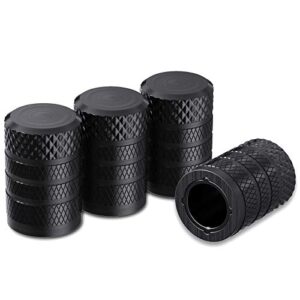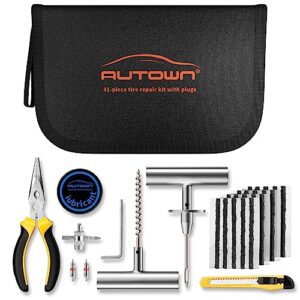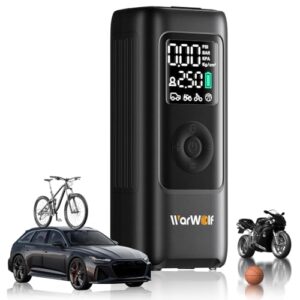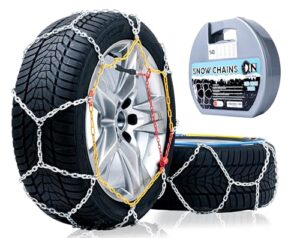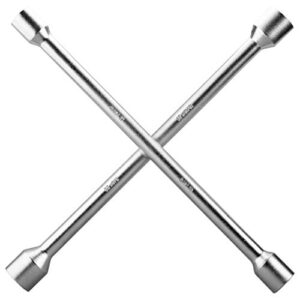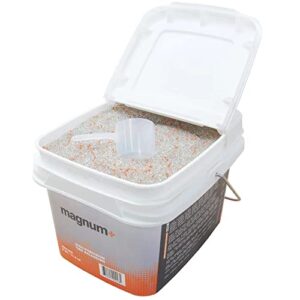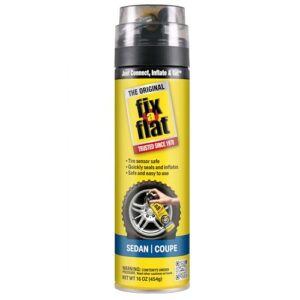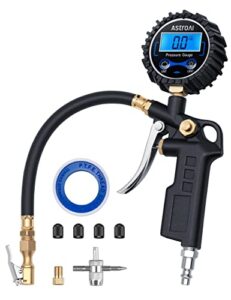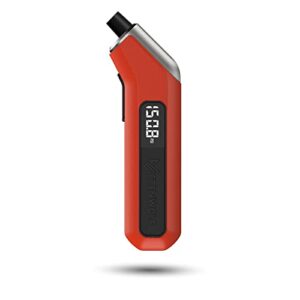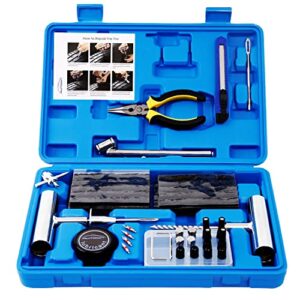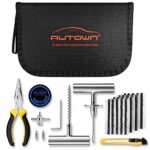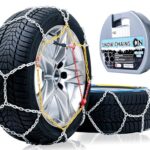Replace tires every six years or when tread depth reaches 2/32 inches. Regular inspections ensure safety and optimal performance.
Tires are crucial for vehicle safety and performance. Proper maintenance and timely replacements prevent accidents and improve driving comfort. Regularly checking tire condition helps identify wear and tear early. Tread depth, age, and visible damage are key indicators for replacement.
Driving habits and road conditions also affect tire longevity. Investing in quality tires and maintaining them extends their lifespan. Proper inflation, alignment, and rotation are essential practices. Keeping a close eye on your tires ensures a safer driving experience. Always consult the vehicle’s manual and follow manufacturer recommendations for tire care. Regular tire checks and timely replacements are vital for road safety.
Signs Of Tire Wear And Tear
Understanding the signs of tire wear and tear is essential for your safety. Worn-out tires can lead to poor performance and dangerous situations. Regular checks can help you spot issues early and replace tires on time.
Visual Indicators
Visual inspection is the first step in checking tire wear. Here are some visual indicators:
- Tread Depth: Use a penny to check tread depth. Insert the penny into the tread with Lincoln’s head down. If you can see the top of Lincoln’s head, your tread is too low.
- Cracks and Bulges: Look for cracks or bulges on the tire sidewalls. These can indicate structural issues.
- Uneven Wear: Check for uneven wear patterns. This could mean alignment issues or improper inflation.
- Tread Wear Indicators: Modern tires have built-in wear indicators. These appear as bars across the tread when it’s time to replace the tire.
Performance Symptoms
Performance symptoms provide clues about tire wear. Here are some common performance symptoms:
- Vibration: If you feel vibrations while driving, it may indicate tire issues.
- Pulling to One Side: If your car pulls to one side, check your tires. Uneven wear or low pressure could be the cause.
- Poor Traction: Reduced traction can be a sign of worn tires. This is especially noticeable in wet conditions.
- Longer Stopping Distances: Worn tires can increase stopping distances. This can be dangerous in emergencies.

Tire Lifespan Expectations
Knowing how often to replace tires is crucial. Tires wear out over time.
Understanding the tire lifespan expectations can help you plan ahead.
Regular checks ensure safety and performance.
Average Mileage Lifespan
Tires usually last between 25,000 to 75,000 miles. The average lifespan is about 50,000 miles.
Mileage depends on the tire type and driving conditions.
| Tire Type | Average Mileage |
|---|---|
| All-Season Tires | 50,000 – 70,000 miles |
| Performance Tires | 25,000 – 40,000 miles |
| Off-Road Tires | 40,000 – 60,000 miles |
Factors Affecting Durability
Many factors impact tire durability. Here are the key ones:
- Driving Habits: Aggressive driving wears tires faster.
- Road Conditions: Rough roads reduce tire lifespan.
- Tire Maintenance: Regular rotation and balancing help.
- Climate: Extreme temperatures affect tire wear.
Good maintenance extends tire life. Check tire pressure often. Rotate tires every 5,000 miles. Balance tires regularly.
The Role Of Maintenance In Tire Longevity
Proper maintenance can greatly extend the life of your tires. Regular care helps you get the most out of your investment. Let’s explore two key maintenance practices.
Regular Rotations And Balancing
Rotating your tires helps them wear evenly. This practice involves switching the tires’ positions. Each tire gets to experience different stress points. This ensures that no single tire wears out faster than the others.
Balancing your tires is also crucial. It prevents uneven wear and ensures a smooth ride. An unbalanced tire can cause vibrations. These vibrations can lead to premature tire wear. Balancing your tires ensures even distribution of weight. This practice can help extend the life of your tires.
Proper Inflation Practices
Keeping your tires properly inflated is essential. Under-inflated tires can wear out quickly. They also reduce your car’s fuel efficiency. Over-inflated tires can lead to uneven wear. Always check your tire pressure regularly. It’s best to follow the manufacturer’s guidelines for tire pressure.
Use a reliable gauge to check the pressure. Make it a habit to check once a month. This simple practice can help your tires last longer. Plus, it ensures a safer driving experience.
| Maintenance Practice | Benefits |
|---|---|
| Tire Rotation | Ensures even wear, extends tire life |
| Tire Balancing | Prevents vibrations, promotes even wear |
| Proper Inflation | Prevents quick wear, improves fuel efficiency |

When To Replace Tires: Mileage Vs. Age
Knowing when to replace your tires is crucial for safety. Two main factors to consider are mileage and age. Each influences tire performance and safety differently.
Mileage Guidelines
Tire mileage varies by brand and type. On average, tires last between 25,000 to 50,000 miles. Check the manufacturer’s recommendations for specific guidance.
- Standard tires: 25,000 – 50,000 miles
- Performance tires: 20,000 – 40,000 miles
- All-terrain tires: 40,000 – 70,000 miles
Track your mileage to stay within these ranges. Regularly inspect your tires for wear. Uneven tread can shorten tire lifespan.
Age Considerations
Even if mileage is low, tires age over time. Rubber degrades and loses elasticity, affecting performance. Experts recommend replacing tires every 6 to 10 years, regardless of mileage.
Check the DOT code on the tire sidewall. The last four digits indicate the manufacture date. For example, 3019 means the tire was made in the 30th week of 2019.
- Tires over 6 years: Inspect annually
- Tires over 10 years: Replace immediately
Environmental factors like temperature and exposure to sunlight accelerate tire aging. Store spare tires in a cool, dark place to extend their lifespan.
Understanding Tread Depth
Tread depth is crucial for your tire’s performance and safety. It affects grip, handling, and stopping distance. Regularly checking tread depth ensures your tires are in good condition.
Measuring Techniques
There are several ways to measure tread depth. Each method has its own advantages.
- Penny Test: Insert a penny into the tread groove. If Lincoln’s head is visible, your tread is too low.
- Quarter Test: Insert a quarter into the tread groove. If you see Washington’s head, it’s time to replace the tire.
- Tread Depth Gauge: This tool provides an accurate measurement. Place the gauge in the groove and read the depth.
Legal Limits And Safety
Different regions have legal limits for tread depth. Knowing these limits keeps you safe and legal.
| Region | Legal Tread Depth |
|---|---|
| United States | 2/32 inches |
| United Kingdom | 1.6 mm |
| European Union | 1.6 mm |
Driving with low tread depth is dangerous. It increases the risk of hydroplaning and reduces traction.
- Check tread depth monthly.
- Replace tires when they reach the legal limit.
- Use a gauge for the most accurate measurement.
Keeping your tread depth within legal limits ensures a safer driving experience.

Choosing The Right Replacement Tires
Choosing the right replacement tires is crucial for safety and performance. The right tires ensure a smooth and safe driving experience. This guide will help you understand the types and features of tires. It will also assist you in making an informed purchase.
Types And Features
There are several types of tires, each designed for specific needs. Below is a table that outlines the various types and their features:
| Type | Features |
|---|---|
| All-Season Tires | Suitable for all weather conditions, good durability |
| Summer Tires | Better grip and handling in warm weather |
| Winter Tires | Excellent traction on snow and ice |
| Performance Tires | Increased speed and agility, less durability |
| Off-Road Tires | Great for rough terrains, strong build |
Making An Informed Purchase
Making an informed purchase involves considering several factors. Below are steps to guide you:
- Check your owner’s manual: Follow manufacturer recommendations.
- Consider your driving conditions: Choose tires based on weather and terrain.
- Look for quality brands: Trustworthy brands ensure reliability.
- Check tire ratings: Look at tread life, traction, and temperature ratings.
- Set a budget: Balance between quality and cost.
By following these steps, you’ll find the right tires. Good tires lead to a safer and more enjoyable drive.
Frequently Asked Questions
How Long Do Tires Last On Average?
Tires typically last between 25,000 to 50,000 miles. Factors like driving habits and road conditions affect lifespan. Regular maintenance helps.
How Often Should You Replace All 4 Tires?
Replace all 4 tires every 6 years or 40,000 to 60,000 miles, depending on wear and driving conditions. Regularly check tire tread and alignment for safety.
At What Mileage Should Tires Be Replaced?
Tires should be replaced every 25,000 to 50,000 miles. Check tread wear indicators for signs of replacement. Regular maintenance extends tire life.
Should I Replace My Tires Every 3 Years?
Replace your tires every 3 years if tread is worn or sidewalls are cracked. Regularly check for damage.
Conclusion
Regular tire replacement ensures safety and optimal performance. Monitor tread wear and tire age for timely changes. Check tire pressure monthly to extend lifespan. Always consult your vehicle’s manual for specific guidelines. Investing in new tires can prevent accidents and save money in the long run.
Prioritize tire maintenance for a smoother, safer ride.





